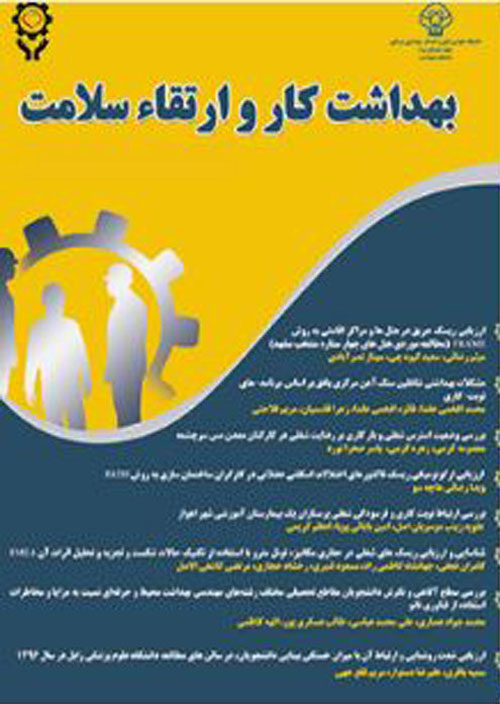Assessing the Perception of Risk and Safety Climate of the Employees of Andishmandan Jonoob Company in 2020
Safety climate and risk perception are two very important factors in safety studies that by examining and analyzing them, appropriate results can be obtained from the safety status of employees. This descriptive cross-sectional study was conducted randomly in 2020 on 388 employees of different departments of Andishmandan Jonoob Company project in Ahvaz.
The Nordic Safety Atmosphere Questionnaire (NOSACQ-50) was used to assess the safety climate, the Flynn risk perception questionnaire was used to assess the risk perception, and the Likert method was used to assess the safety climate and risk perception assessment. Before distributing the questionnaire to the employees, a short educational class was held by the researcher on how to complete the questionnaire, and after distributing the questionnaire, the employees took 45 min to complete the questionnaire, and then the questionnaires were collected. To analyze the data, SPPS 24 software was used and to determine the differences between the studied variables, one-way analysis of variance (One-Way ANOVA) was utilized.
In this study, the mean weight and height of the subjects were 81.57±18.45 kg and 176.32±24.68 cm, respectively. Among the employees, 43.81% had a diploma, 37.37% aged 30 to 40 years, 76.03% had 1 to 10 years of work experience, and 80.67% were workers. The mean scores of different dimensions of safety climate based on age, work experience, and education level showed that the mean safety commitment of employees for age, work experience, and education level were 0.76, 0.98, and 0.76, respectively. In this study, 14 workplace risks were considered that the risk of electric shock, back pain, and repetitive movements by employees did not have a score of 1 (very low risk). The risks of hitting the hot surface and falling objects on the foot by the employees did not have a score of 5 (high risk).
The results of the mean scores of employees based on the safety climate questionnaire in the studied dimensions showed that the safety climate among the employees of the studied service jobs is relatively weak. Therefore, in order to reduce the potential risks in service jobs and reduce accidents, safety and health issues should be trained with proper and codified planning, and the safety culture of employees should be increased with new methods and new technologies. Regarding the perception of risk, it can be concluded that some risks were not felt by employees and were not observed by individuals; therefore, employees gave a low score to these risks.
- حق عضویت دریافتی صرف حمایت از نشریات عضو و نگهداری، تکمیل و توسعه مگیران میشود.
- پرداخت حق اشتراک و دانلود مقالات اجازه بازنشر آن در سایر رسانههای چاپی و دیجیتال را به کاربر نمیدهد.


